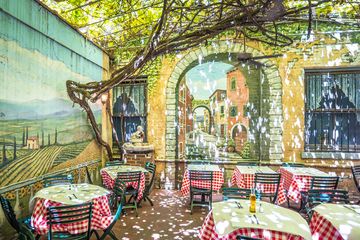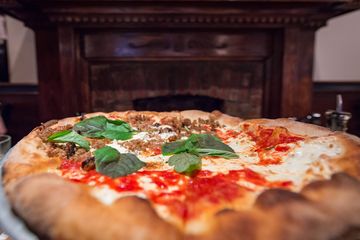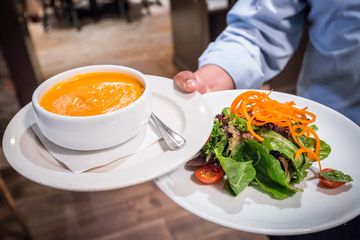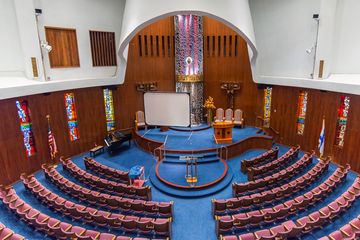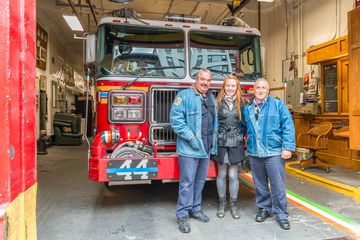When we were walking by the firehouse of the Fighting Forty Four, founded in 1881, we were thrilled to find the door wide open. Children on their way home from school were gaping wide-mouthed at the fire engines while smiling firefighters looked on. We joined the ogling children and met the men, Wayne, Kenny, and Bobby, who showed us around the house and spoke about the history of the New York Fire Fighters. Over the course of our conversation, an occasional call would come in to the men. Not knowing what it meant, I asked, “Do you need to run? ” “Oh no, ” Wayne replied, “We don’t need to run. If we’re running, it means you should be running, too. ”One of my first questions was about the number “44. ” I learned that it is essentially arbitrary. It refers to when the squad was formed, long before the Brooklyn and Metropolitan fire departments merged. 44, however, is a designated specialty unit, meaning that only men who have a certain level of experience are assigned. This is because they are a Hazmat division. The men showed us the Hazmat truck, which has a big sticker that says “Zombie Outbreak Response Team. ” It matches a sticker on the main truck that imitates the “Ebola Emergency Outbreak Response Team” symbol, only with zombies. Smiling they said that little children often ask, “Is that for real? Do you really fight zombies? ”Although full of good humor, the men became somber when I commented on a memorial for Michael Lyons, a firefighter who was killed while responding during 9/11. Wayne and Bobby began sharing stories about several of their friends who were present at the World Trade Center that day. One survived by diving under a truck, while The 9th Battalion lost all of its men. Many of the firefighters from 6 Truck in Chinatown also responded that day, but not everyone came back. Men who turned one way coming down the stairs lived, and the men who turned the other way did not. As Bobby said, “If they had yin-ed when they had yang-ed, they would've have made it. ”We continued our tour of the house: There is the old hose tower, painted red, as well as the cubbies where the men keep their uniform. I was like a child, gazing at the two traditional firemen’s poles stretching to the upper floor. When I asked if they still slide down them, the answer was a definitive "yes. " I appreciated the fact that they had photos of men who have retired. I never realized that even though there are about thirty men assigned to 44, they are frequently traded around to different houses. As a rule, this firehouse usually has six men present at any given time, and never fewer than five. Another interesting fact that I never stopped to think about, of which Bobby informed us as he showed us a map, is that on the East Side, there is a firehouse right by every subway stop. Irish history is still deeply woven into the culture of the fire department. I noticed that along with the Leprechaun in the logo for the “Fighting Forty Four, ” there were many other references to Irish heritage scattered around the firehouse, including little Irish flags on the fire engine. Historically, there is a huge Irish connection to many service jobs in the city, including police work. As Bobby explained, “No one else would take the shit jobs. So they’d send in the Irish. ” There are no longer any Irish accents in this firehouse - as Wayne stated, “We’re all Bronx guys. ” Coming from uptown, the men told us that they respect the fact that they can keep their firehouse open and wave to smiling children of the Upper East Side. As if to demonstrate this, Wayne’s daughter ran into the firehouse and skipped upstairs to do her homework before heading to a hockey game with her dad. “It’s a good neighborhood, ” Wayne continued, “So we can keep the door open. ”
